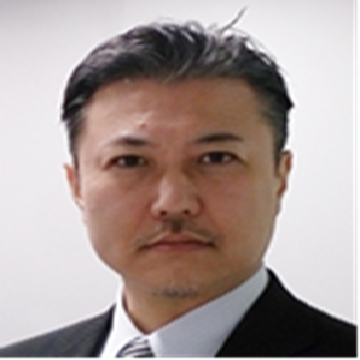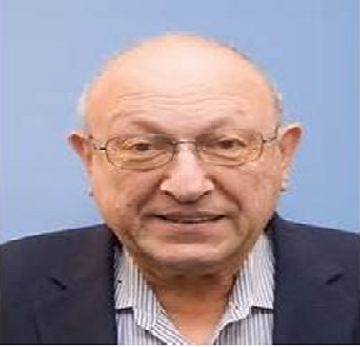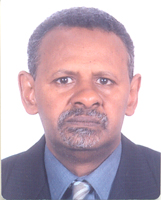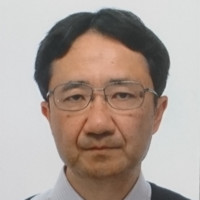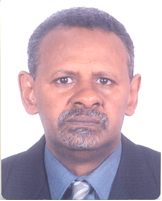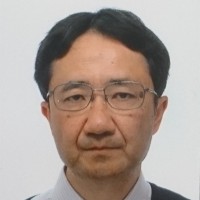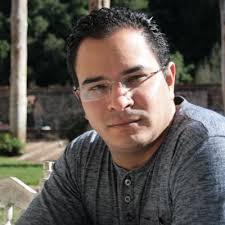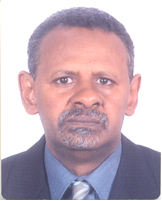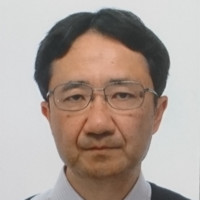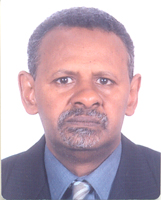Scientific Program
Keynote Session:
Title: Direct ceramic additive manufacturing by ultraviolet laser lithography
Biography:
Abstract:
Title: Boltzmann-arrhenius-zhurkov equation and its application in electronics-and-photonics reliability-physics problems: review and extension
Biography:
Abstract:
Title: Sustainable development and environment of biomass from agriculture residues
Biography:
Abstract:
The demand for energy continued to outstrip supply and necessitated the development of biomass option. Residues were the most popular forms of renewable energy and currently biofuel production became much promising. Agricultural wastes contained high moisture content and could be decomposed easily by microbes. Agricultural wastes were abundantly available globally and could be converted to energy and useful chemicals by a number of microorganisms. Compost or bio-fertiliser could be produced with the inoculation of appropriated thermophilic microbes which increased the decomposition rate, shortened the maturity period and improved the compost (or bio-fertiliser) quality. The objective of the present research was to promote the biomass technology and involved adaptive research, demonstration and dissemination of results. With a view to fulfill the objective, a massive field survey was conducted to assess the availability of raw materials as well as the present situation of biomass technologies. In the present communication, an attempt had also been made to present an overview of present and future use of biomass as an industrial feedstock for production of fuels, chemicals and other materials. We may conclude from the review paper that biomass technology must be encouraged, promoted, invested, implemented, and demonstrated, not only in urban areas but also in remote rural areas.(1) The biomass energy, one of the important options, which might gradually replace the oil in facing the increased demand for oil and may be an advanced period in this century. Any county can depend on the biomass energy to satisfy part of local consumption.(2) Development of biogas technology is a vital component of alternative rural energy programme, whose potential is yet to be exploited. A concerted effect is required by all if this is to be realised. The technology will find ready use in domestic, farming, and small-scale industrial applications.(3) Support biomass research and exchange experiences with countries that are advanced in this field. In the meantime, the biomass energy can help to save exhausting the oil wealth.
Title: Analysis of lithium ion concentration changes in a nano-films silicon carbide - lithium battery
Biography:
Abstract:
Title: Schematic idea with sustainable energy
Biography:
Abstract:
To have consideration with focus on the energy provision matters, there are several findings with a couple of points. First, it is much based upon geographic features respectively on each country, region. For instance like EU area organized countries have each role with generator way, provision system operation as well. One huge element as a country like China should have huge energy power not only for the economic growth but also for the daily life categories. In Japan, of course including myself, we’ve been so wondering with huge power resource required and not so perfectly match to the geography without wider plane area besides Tokyo or around. Secondly, in views of principles of energy generated by technology and equipment it should be handled by organization manner like company, small firms or national corporation. For energy related equipment R&D activities it has been developed globally with each roles which is depending upon source material location, weather condition to suite generator methods for instance marine generator and general power like thermal power or nuclear energy. Lastly, social trend is now running along the light and portable equipment which has much influence with over all energy situation. Most people upper layers have smart device in hand like this and the power is to be supplied with portable battery like this. It means it could be deployed into wider, bigger energy scale like organization. Public energy provision. It is of course still on the course of development and yet to carry out in the practice however while huge energy source generated by Thermal power by oil heated or nuclear energy with safety much more sophisticated than the time era before. It can cause essential social issues to solve. In this keynote speech a couple of slides to discuss were already shown in a hope that extremely well organized technology source and idea with resolution.
Title: The role and experience of sudan in assisting to develop and implement national drug policies
Biography:
Abstract:
A PHP Error was encountered
Severity: 8192
Message: trim(): Passing null to parameter #1 ($string) of type string is deprecated
Filename: pastconference/past-program-schedule.php
Line Number: 239
Backtrace:
File: /efsdata/meetingsint-com/application/views/pastconference/past-program-schedule.php
Line: 239
Function: trim
File: /efsdata/meetingsint-com/application/controllers/Pastconference.php
Line: 128
Function: view
File: /efsdata/meetingsint-com/index.php
Line: 317
Function: require_once
Title: Self-Employment Firm (SofTech)
Biography:
Abstract:
A PHP Error was encountered
Severity: 8192
Message: trim(): Passing null to parameter #1 ($string) of type string is deprecated
Filename: pastconference/past-program-schedule.php
Line Number: 239
Backtrace:
File: /efsdata/meetingsint-com/application/views/pastconference/past-program-schedule.php
Line: 239
Function: trim
File: /efsdata/meetingsint-com/application/controllers/Pastconference.php
Line: 128
Function: view
File: /efsdata/meetingsint-com/index.php
Line: 317
Function: require_once
Title: MESOPOROUS METAL SULFIDE AND METAL SELENIDE THIN FILMS
Biography:
Abstract:
A PHP Error was encountered
Severity: 8192
Message: trim(): Passing null to parameter #1 ($string) of type string is deprecated
Filename: pastconference/past-program-schedule.php
Line Number: 239
Backtrace:
File: /efsdata/meetingsint-com/application/views/pastconference/past-program-schedule.php
Line: 239
Function: trim
File: /efsdata/meetingsint-com/application/controllers/Pastconference.php
Line: 128
Function: view
File: /efsdata/meetingsint-com/index.php
Line: 317
Function: require_once
Title: Nanotechnology And Cannabis
Biography:
Abstract:
It's no secret that the last five years have been good for the cannabis industry. Although legalization has yet to spread around the world, the stigma surrounding cannabis use has begun to shift towards a more widespread acceptance of the benefits of the plant. In Canada alone, the legal market is worth $ 5 billion by 2021, which is a conservative estimate, as Canada has one of the highest rates of cannabis use.Along with the myriad businesses riding this wave, so are the scientists. An innovation racehas been launched to explore the various applications of cannabis in health and wellness.While nanotechnology has been used in the food and medical industries for some time, its potential with cannabis is only just beginning to be explored.According to the Pot Network, cannabis, and other products in general, appears to work most effectively when broken down into tiny particles. When they break down, chronic pain patients, for example, may feel the first signs of relief within 15 minutes of absorption. This is due to the fact that the nanoparticles are directly absorbed into the bloodstream
Oral Session 1:
- Materials Science and Metallurgy | Advanced Materials | Nano Technology
A PHP Error was encountered
Severity: 8192
Message: trim(): Passing null to parameter #1 ($string) of type string is deprecated
Filename: pastconference/past-program-schedule.php
Line Number: 354
Backtrace:
File: /efsdata/meetingsint-com/application/views/pastconference/past-program-schedule.php
Line: 354
Function: trim
File: /efsdata/meetingsint-com/application/controllers/Pastconference.php
Line: 128
Function: view
File: /efsdata/meetingsint-com/index.php
Line: 317
Function: require_once
Title: Sustainable development and environment of biomass from agriculture residues
Biography:
Abdeen Mustafa Omer (BSc, MSc, PhD) is an Associate Researcher at Energy Research Institute (ERI). He obtained both his PhD degree in the Built Environment and Master of Philosophy degree in Renewable Energy Technologies from the University of Nottingham. He is qualified Mechanical Engineer with a proven track record within the water industry and renewable energy technologies. He has been graduated from University of El Menoufia, Egypt, BSc in Mechanical Engineering. His previous experience involved being a member of the research team at the National Council for Research/Energy Research Institute in Sudan and working director of research and development for National Water Equipment Manufacturing Co. Ltd., Sudan. He has been listed in the book WHO’S WHO in the World 2005, 2006, 2007 and 2010. He has published over 300 papers in peer-reviewed journals, 200 review articles, 7 books and 150 chapters in books.
Abstract:
Title: Analysis of lithium ion concentration changes in a nano-films silicon carbide - lithium battery
Biography:
Abstract:
A PHP Error was encountered
Severity: 8192
Message: trim(): Passing null to parameter #1 ($string) of type string is deprecated
Filename: pastconference/past-program-schedule.php
Line Number: 354
Backtrace:
File: /efsdata/meetingsint-com/application/views/pastconference/past-program-schedule.php
Line: 354
Function: trim
File: /efsdata/meetingsint-com/application/controllers/Pastconference.php
Line: 128
Function: view
File: /efsdata/meetingsint-com/index.php
Line: 317
Function: require_once
Title: Schematic idea with sustainable energy
Biography:
Abstract:
A PHP Error was encountered
Severity: 8192
Message: trim(): Passing null to parameter #1 ($string) of type string is deprecated
Filename: pastconference/past-program-schedule.php
Line Number: 354
Backtrace:
File: /efsdata/meetingsint-com/application/views/pastconference/past-program-schedule.php
Line: 354
Function: trim
File: /efsdata/meetingsint-com/application/controllers/Pastconference.php
Line: 128
Function: view
File: /efsdata/meetingsint-com/index.php
Line: 317
Function: require_once

